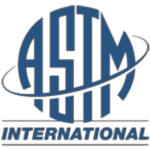The ASTM International Committee F38 on Unmanned Aircraft Systems has recently approved seven new standards that cover all major facets of small unmanned aircraft systems operations, including design, construction, operation and maintenance requirements.
The following seven new ASTM standards, written for all sUAS that are permitted to operate over a defined area and in airspace defined by a nation’s governing aviation authority, have now been approved by F38:
- F2908, Specification for Aircraft Flight Manual (AFM) for a Small Unmanned Aircraft System (sUAS). F2908 defines minimum requirements for the aircraft flight manual, which provides guidance to owners, mechanics, pilots, crew members, airports, regulatory officials and aircraft and component manufacturers who perform or provide oversight of sUAS flight operations.
- F2909, Practice for Maintenance and Continued Airworthiness of Small Unmanned Aircraft Systems (sUAS). F2909 establishes a practice for the maintenance and continued airworthiness of sUAS. Requirements for continued airworthiness, inspections, maintenance and repairs/alterations are included.
- F2910, Specification for Design and Construction of a Small Unmanned Aircraft System (sUAS). F2910 defines the design, construction and test requirements for sUAS. In addition to general requirements, F2910 covers requirements for structure, propulsion, propellers, fuel and oil systems, cooling, documentation and other key areas.
- F2911, Practice for Production Acceptance of Small Unmanned Aircraft System (sUAS). F2911 defines production acceptance requirements for sUAS. Requirements covered include several aspects of production, system level production acceptance, quality assurance and documentation.
- F3002, Specification for Design of the Command and Control System for Small Unmanned Aircraft Systems (sUAS). F3002 provides a consensus standard in support of an application to a nation’s governing aviation authority to operate an sUAS for commercial or public use. The standard focuses on command and control (C2) links, including a diagram of a C2 system and general requirements for C2 system components.
- F3003, Specification for Quality Assurance of a Small Unmanned Aircraft System (sUAS). F3003 defines quality assurance requirements for design, manufacture and production of small unmanned aircraft systems. Guidance is given to sUAS manufacturers for the development of a quality assurance program.
- F3005, Specification for Batteries for Use in Small Unmanned Aircraft Systems (sUAS). F3005 defines requirements for battery cells used in sUAS. Mechanical design and safety, and electrical design battery maintenance are primary battery-related areas that are covered.
“The introduction of these standards developed by F38 will help to provide a safe and appropriate path for near-term routine sUAS operations in airspace systems of the United States and other countries,” says Theodore Wierzbanowski, chairman F38.
Committee F38 encourages participation in its standards developing activities. “The user community for these standards is vast,” says Wierzbanowski. “Feedback on what works and what doesn’t during these early stages of sUAS operation is critical.”
F2908 is under the jurisdiction of F38.03 on Personnel Training, Qualification and Certification, and F2909 was developed by F38.02 on Flight Operations. The other five new standards are under the jurisdiction of F38.01 on Airworthiness.
Source: Web Site


In light of the significance that FAA attaches to “see and avoid” as a risk management or mitigation concept for introducing UAS into NAS – might I suggest a Consensus Standard for UAS Conspicuity? Between “cooperative ATC” ( ? – ADS-B ) and multi-sensory means of maintaing locational awareness ( e.g., strobe lights; “loud” UAS noise; banner towing; other imaginative prospects), opportunity would exist for making more definite performance measures for what enables the GA pilot to be comfortable sharing the NAS with UAS – let alone the Airline Transport Pilot or the Air Traffic Controller